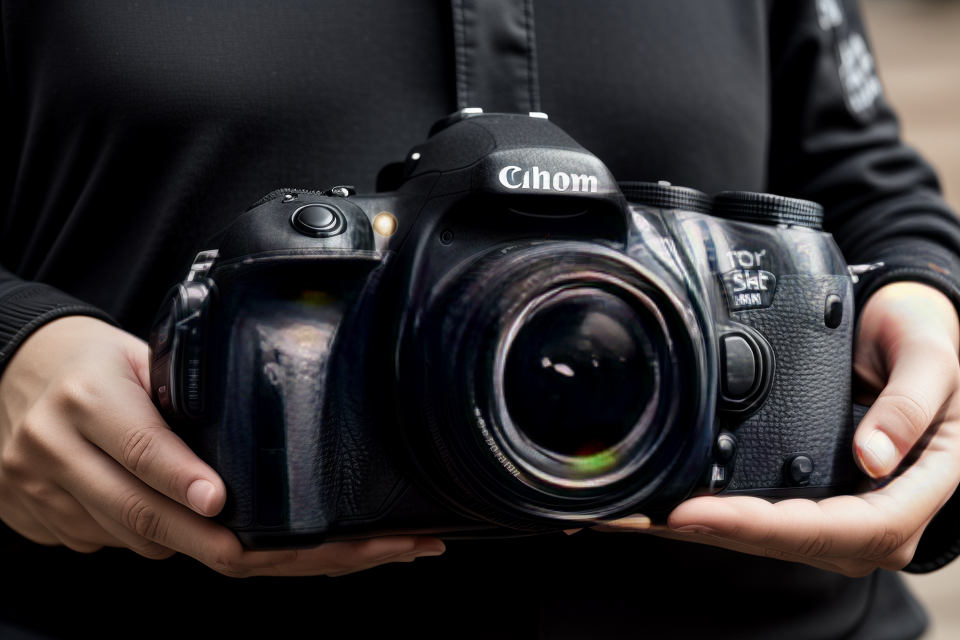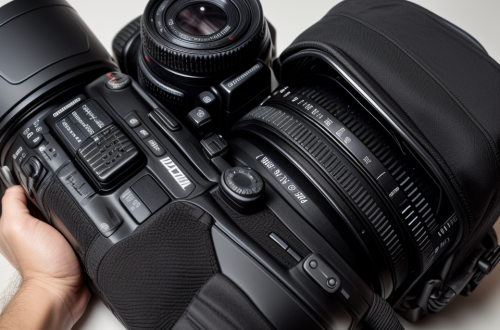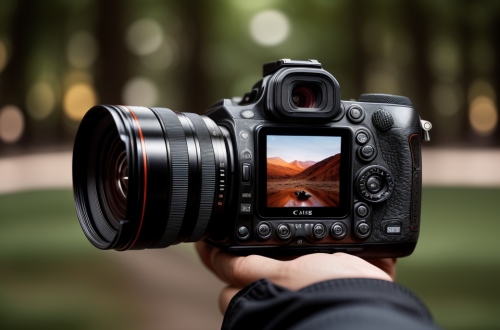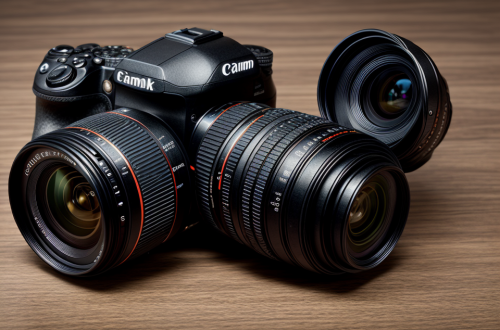Are you considering investing in a DSLR camera but unsure if it’s worth the expense? With so many options available in the market, it can be challenging to decide whether a DSLR camera is the right choice for you. In this comprehensive guide, we will explore the value of investing in a DSLR camera and help you make an informed decision. From the advantages of a DSLR camera to its capabilities and features, we will cover everything you need to know before making a purchase. So, buckle up and get ready to explore the world of DSLR photography!
Is a DSLR Camera Worth the Investment?
The Advantages of DSLR Cameras
When it comes to investing in a DSLR camera, many people wonder if the benefits of this type of camera outweigh the cost. In this section, we will explore the advantages of DSLR cameras to help you determine if investing in one is worth it.
Improved Image Quality
One of the main advantages of DSLR cameras is improved image quality. DSLR cameras have larger sensors than most point-and-shoot cameras, which means they can capture more light and produce higher-quality images. This is especially true in low-light situations, where a DSLR camera can produce significantly better results than a point-and-shoot camera. Additionally, DSLR cameras often have higher resolution sensors, which means that they can produce larger, more detailed images.
Interchangeable Lenses
Another advantage of DSLR cameras is the ability to use interchangeable lenses. This means that you can swap out the lens on your camera to suit your needs. For example, if you want to take pictures of a specific subject, you can use a specialized lens that is designed for that subject. This gives you much more flexibility than a point-and-shoot camera, which typically has a fixed lens.
Better Low-Light Performance
As mentioned earlier, DSLR cameras tend to perform better in low-light situations than point-and-shoot cameras. This is because they have larger sensors that can capture more light, and they often have lower noise levels at higher ISO settings. This means that you can take better pictures in low-light situations without using a flash, which can be useful for a variety of photography applications.
Manual Controls
Finally, DSLR cameras offer manual controls that allow you to fine-tune your camera settings to get the exact results you want. This is especially useful for advanced photographers who want to have complete control over their camera settings. With a DSLR camera, you can adjust settings like aperture, shutter speed, and ISO to get the perfect exposure for your shots. You can also adjust settings like white balance and focus to get the exact look you want.
The Disadvantages of DSLR Cameras
Expensive
One of the primary drawbacks of investing in a DSLR camera is the cost. While there are several options available at different price points, the initial investment can be substantial. Even entry-level DSLRs can cost several hundred dollars, and high-end models can easily reach thousands of dollars. This cost may be prohibitive for some individuals, especially those who are on a tight budget or are unsure if they will continue to use the camera long-term.
Heavy and Bulky
DSLR cameras are often larger and heavier than other types of cameras, such as mirrorless or compact cameras. This can make them difficult to carry around and use for extended periods of time. Additionally, the weight and size of the camera can make it challenging to capture candid or spontaneous moments, as it may be more noticeable and cumbersome to carry.
Steep Learning Curve
Unlike smartphones or other point-and-shoot cameras, DSLRs require a significant amount of technical knowledge and skill to use effectively. This can be a significant barrier for individuals who are new to photography or who are not familiar with manual camera settings. The learning curve can be steep, and it may take some time and effort to become proficient with a DSLR camera.
Limited Video Capabilities
While DSLR cameras are capable of capturing high-quality video, they are typically limited in their video capabilities compared to dedicated video cameras. For example, DSLRs often lack features such as professional-grade autofocus or external microphone inputs, which can be important for serious videographers. Additionally, the size and weight of the camera can make it difficult to use for extended periods of time when shooting video.
Choosing the Right DSLR Camera for Your Needs
Factors to Consider
When considering investing in a DSLR camera, it is important to take several factors into account to ensure that you make the best possible choice for your needs. The following are some of the key factors to consider when choosing a DSLR camera:
- Budget: One of the most important factors to consider when purchasing a DSLR camera is your budget. DSLR cameras can range in price from a few hundred dollars to several thousand dollars, depending on the features and capabilities of the camera. It is important to set a budget and choose a camera that fits within that budget while still meeting your needs.
- Type of Photography: Another important factor to consider is the type of photography you plan to engage in. Different DSLR cameras are better suited for different types of photography, such as landscape, portrait, sports, or wildlife photography. Research the specific features and capabilities of each camera to determine which one is best suited for your intended use.
- Lens Selection: The lenses you choose for your DSLR camera can have a significant impact on the quality of your photos. Consider the types of lenses you will need for your intended photography and research which cameras are compatible with those lenses. Some cameras may have a more extensive selection of compatible lenses, while others may have fewer options.
- Body Weight and Ergonomics: DSLR cameras can be quite heavy and bulky, especially when combined with additional lenses and accessories. Consider the weight and ergonomics of the camera when choosing a DSLR. If you plan to carry your camera with you for extended periods of time, a lighter camera may be more comfortable to use. Additionally, consider the placement of buttons and controls on the camera to ensure that it is comfortable to use and easy to operate.
Popular DSLR Camera Brands and Models
When it comes to choosing the right DSLR camera for your needs, it’s important to consider the different brands and models available on the market. Here are some of the most popular DSLR camera brands and models:
Canon
Canon is one of the most well-known brands in the photography industry, and for good reason. Their DSLR cameras are known for their excellent image quality, ease of use, and wide range of features. Some popular Canon DSLR models include the EOS 5D Mark IV, EOS 6D Mark II, and EOS Rebel T7i.
Nikon
Nikon is another highly regarded brand in the photography world, with a reputation for producing high-quality DSLR cameras. Their DSLRs are known for their excellent image quality, fast autofocus, and durability. Some popular Nikon DSLR models include the D850, D780, and D5600.
Sony
Sony is a relative newcomer to the DSLR market, but they have quickly made a name for themselves with their innovative technology and impressive image quality. Some popular Sony DSLR models include the A7R IV, A7 III, and A6100.
Fujifilm
Fujifilm is a brand that is known for its unique film simulations, which mimic the look of various film stocks. Their DSLR cameras are known for their excellent image quality, intuitive controls, and retro design. Some popular Fujifilm DSLR models include the X-T4, X-T3, and X-Pro3.
Pentax
Pentax is a brand that is known for its rugged and durable DSLR cameras, which are perfect for outdoor and adventure photography. Their DSLRs are also known for their unique features, such as weather-sealing and in-body image stabilization. Some popular Pentax DSLR models include the K-1 II, K-3 III, and K-70.
Choosing the right DSLR camera for your needs depends on your budget, shooting style, and specific requirements. By considering the different brands and models available, you can find the perfect camera to suit your needs and help you take your photography to the next level.
DSLR vs. Mirrorless Cameras
When it comes to choosing a DSLR camera, one of the first decisions you’ll need to make is whether to go with a DSLR or a mirrorless camera. Both types of cameras have their own unique design and technology, and each has its own set of pros and cons.
Differences in Design and Technology
DSLR cameras use a mirror to reflect light from the lens to an optical viewfinder. When you press the shutter button, the mirror flips up, allowing light to hit the image sensor and capture the image. DSLRs are typically heavier and bulkier than mirrorless cameras, but they often have better battery life and more physical controls.
Mirrorless cameras, on the other hand, don’t have a mirror or an optical viewfinder. Instead, they use an electronic viewfinder (EVF) or the rear LCD screen to preview the image. Light from the lens is directed directly to the image sensor, which then sends the image to the EVF or the rear screen. Mirrorless cameras are typically smaller and lighter than DSLRs, making them a popular choice for travel and everyday use.
Pros and Cons of Each Type
DSLRs have been the traditional choice for professional photographers for many years, and they offer several advantages. DSLRs tend to have better autofocus systems, faster shooting speeds, and more lens options. They also tend to perform better in low-light situations and can handle harsh weather conditions. However, DSLRs can be heavy and bulky, and they may not be as convenient for everyday use.
Mirrorless cameras, on the other hand, are generally more portable and lightweight, making them a great choice for travel and everyday use. They often have better battery life than DSLRs, and they can shoot high-quality video. However, mirrorless cameras may not have as many lens options as DSLRs, and their autofocus systems may not be as reliable in certain situations.
Choosing Between DSLR and Mirrorless
Ultimately, the choice between a DSLR and a mirrorless camera will depend on your specific needs and preferences. If you prioritize portability and convenience, a mirrorless camera may be the best choice for you. If you prioritize image quality and performance, a DSLR may be the better option. It’s also worth considering your budget, as DSLRs tend to be more expensive than mirrorless cameras.
In the end, the most important thing is to choose a camera that fits your needs and allows you to capture the images you want. Whether you choose a DSLR or a mirrorless camera, investing in a high-quality camera can help you take your photography to the next level.
Building Your DSLR Camera Kit
Essential Accessories for DSLR Photography
DSLR photography is an exciting and rewarding hobby that requires the right equipment to produce stunning images. In addition to a DSLR camera, there are several essential accessories that every photographer should consider when building their kit. In this section, we will explore the must-have accessories for DSLR photography.
Lenses
Lenses are the most critical accessory for DSLR photography. The type of lens you choose will depend on your shooting style and the subjects you want to photograph. Some essential lenses to consider include:
- Standard zoom lens (24-70mm)
- Telephoto zoom lens (70-200mm)
- Wide-angle lens (14-24mm)
- Macro lens (50mm or 100mm)
Tripod
A tripod is an essential accessory for photographers who want to capture sharp images in low-light conditions or when using long exposures. A tripod will help you keep your camera steady and avoid camera shake, which can lead to blurry images. When choosing a tripod, consider the weight and height of the tripod, as well as the type of mounting plate you will need for your camera.
Memory Cards
Memory cards are essential for storing your images. When shooting with a DSLR camera, it’s important to use high-quality memory cards that can handle large file sizes. You should also consider the capacity of the memory card, as well as the speed at which it can write data.
Battery Grip
A battery grip is an accessory that can greatly enhance your shooting experience. A battery grip allows you to hold your camera more comfortably and provides additional battery life, which is essential when shooting for extended periods. When choosing a battery grip, make sure it is compatible with your camera model.
Camera Bag
A camera bag is essential for protecting your camera and lenses when you’re on the go. When choosing a camera bag, consider the size and capacity of the bag, as well as the type of padding and protection it offers. You should also consider the type of camera bag that best suits your shooting style, such as a backpack or shoulder bag.
In conclusion, investing in these essential accessories for DSLR photography will help you take your photography to the next level. By choosing the right lenses, tripod, memory cards, battery grip, and camera bag, you can ensure that you have the tools you need to capture stunning images that you’ll be proud to share with others.
Advanced Accessories for DSLR Photography
DSLR cameras are versatile tools that offer endless possibilities for photography enthusiasts. To get the most out of your DSLR camera, it’s essential to invest in advanced accessories that will enhance your photography experience. Here are some of the best advanced accessories for DSLR photography:
Filters
Filters are an essential accessory for any photographer, and they are especially important when shooting with a DSLR camera. Filters can help you control the amount of light entering your camera, reduce glare and reflections, and protect your lens from dust and debris. There are many different types of filters available, including polarizing filters, UV filters, and graduated filters. Each type of filter has its own unique benefits, so it’s important to choose the right filter for the shot you’re trying to achieve.
Remote Shutter Release
A remote shutter release is a handy accessory that allows you to trigger your camera’s shutter without touching it. This is especially useful when shooting in situations where you need to avoid camera shake, such as when shooting long exposures or time-lapse photography. Remote shutter releases come in a variety of shapes and sizes, from wired releases to wireless remote controls. Choose a remote shutter release that works best for your shooting style and needs.
Microphone
A microphone is an essential accessory for any photographer who wants to capture high-quality audio alongside their video footage. A microphone can help you capture clear and crisp audio, even in noisy environments. There are many different types of microphones available, including lavalier microphones, shotgun microphones, and external microphones. Choose a microphone that fits your shooting style and budget.
Flash
A flash is an essential accessory for any photographer who wants to take pictures in low-light environments. A flash can help you illuminate your subject and capture sharp and detailed images. There are many different types of flashes available, including external flashes, built-in flashes, and ring lights. Choose a flash that fits your shooting style and needs.
Investing in these advanced accessories for DSLR photography will help you take your photography to the next level. Whether you’re shooting landscapes, portraits, or action shots, these accessories will help you capture stunning images that you’ll be proud to share with others.
Tips for Using Your DSLR Camera
Mastering the Basics
- Aperture
- Understanding Aperture: Aperture is a crucial aspect of photography that determines the amount of light entering the camera lens. It is measured in f-stops and can be adjusted to control the depth of field in a photograph. A larger aperture (a smaller f-stop number) will result in a shallower depth of field, while a smaller aperture (a larger f-stop number) will produce a deeper depth of field.
- Practical Application: Aperture can be used to create a blurred background in portraits, isolate a specific part of a scene, or capture a wide depth of field in a landscape.
- Shutter Speed
- Understanding Shutter Speed: Shutter speed refers to the length of time the camera’s shutter is open, and it controls the amount of light that enters the camera. It is measured in seconds or fractions of a second and can be adjusted to capture different effects. A slower shutter speed (1/15 or slower) will allow more light in and can be used to capture motion, while a faster shutter speed (1/1000 or faster) will allow less light in and can be used to freeze motion.
- Practical Application: Shutter speed can be used to capture fast-moving subjects, create motion blur in long exposures, or control the amount of light entering the camera in low light situations.
- ISO
- Understanding ISO: ISO is a measure of the camera’s sensitivity to light and is used to control the amount of light that enters the camera. It is typically set to 100 or 200, but can be increased to 400, 800, or higher, depending on the lighting conditions. A higher ISO setting will make the camera more sensitive to light, allowing for shooting in low light situations, but will also increase noise in the image.
- Practical Application: ISO can be used to capture images in low light situations without using a tripod, adjust the exposure of an image, or maintain a fast shutter speed to freeze motion.
- Focus
- Understanding Focus: Focus is the point of interest in an image that the camera will render sharply. It can be adjusted manually or automatically, depending on the camera settings. Manual focus allows the photographer to control the focus point, while automatic focus uses the camera’s sensors to determine the focus point.
- Practical Application: Focus can be used to create a sharp image of a specific subject, isolate a specific part of a scene, or create a shallow depth of field.
By mastering the basics of aperture, shutter speed, ISO, and focus, photographers can take control of their camera settings and capture stunning images in a variety of lighting conditions.
Advanced Techniques
Mastering the art of photography requires a solid understanding of the basics, but to truly take your skills to the next level, it’s important to explore advanced techniques that push the boundaries of what’s possible with your DSLR camera. Here are some advanced techniques to consider:
- Exposure Bracketing: This technique involves taking multiple shots of the same scene at different exposure levels, and then combining them into a single image that has a wider dynamic range. This can be particularly useful in high-contrast scenes, where it can be difficult to capture both the bright and dark areas of the scene. To use exposure bracketing, simply set your camera to bracketing mode and press the shutter button. The camera will automatically take multiple shots at different exposure levels, and you can then combine them using software such as Adobe Lightroom.
- Time-Lapse Photography: Time-lapse photography involves taking a series of photos over a period of time, and then combining them into a video that shows the changes that occurred over that time. This can be a great way to capture the movement of people or objects, or to show the changing light conditions over the course of a day. To create a time-lapse video, you’ll need to set your camera to a manual exposure setting and use a tripod to keep the camera steady. You can then use software such as Adobe Premiere to combine the photos into a video.
- Astrophotography: Astrophotography involves taking photos of the night sky, including stars, planets, and other celestial objects. This can be a challenging but rewarding technique to master, as it requires careful planning and specialized equipment. To get started with astrophotography, you’ll need a camera with good low-light capabilities, a tripod, and a remote shutter release. You’ll also need to use a specialized camera mount that allows you to track the movement of the stars as the Earth rotates. With the right equipment and some careful planning, you can capture stunning images of the night sky.
- Macro Photography: Macro photography involves taking close-up photos of small objects, such as insects, flowers, or textures. This can be a great way to explore the details and intricacies of the world around us. To get started with macro photography, you’ll need a camera with a high magnification ratio, such as a Canon EF-S 60mm f/2.8 Macro USM lens. You’ll also need a tripod and a remote shutter release, as well as a good understanding of aperture, shutter speed, and focus. With practice, you can capture stunning images of small objects that reveal their hidden beauty.
FAQs
1. What is a DSLR camera?
A DSLR (Digital Single-Lens Reflex) camera is a type of digital camera that uses a mirror to reflect light from the lens to an optical viewfinder. This allows the photographer to see exactly what they are framing and to adjust settings like aperture, shutter speed, and focus manually.
2. What are the benefits of investing in a DSLR camera?
Investing in a DSLR camera offers several benefits, including the ability to take high-quality photos and videos, manual control over settings, and the option to use interchangeable lenses to suit different shooting scenarios. DSLRs also tend to have better image quality and low-light performance compared to other types of cameras.
3. What factors should I consider when choosing a DSLR camera?
When choosing a DSLR camera, consider factors such as the camera’s sensor size, resolution, autofocus system, lens compatibility, and overall build quality. It’s also important to consider your budget and the specific features you need for your shooting style.
4. How do I choose the right lens for my DSLR camera?
Choosing the right lens for your DSLR camera depends on your shooting style and preferences. Consider factors such as the focal length, aperture, and image stabilization features when selecting a lens. It’s also a good idea to read reviews and consult with other photographers to get a better understanding of the best lenses for your needs.
5. How do I learn to use a DSLR camera?
There are many resources available to help you learn how to use a DSLR camera, including online tutorials, photography courses, and books. Practice shooting in different modes and experimenting with different settings to become more familiar with your camera’s capabilities. It’s also helpful to join photography groups or forums to connect with other DSLR users and learn from their experiences.
6. Is investing in a DSLR camera worth it for a beginner photographer?
Investing in a DSLR camera can be worth it for a beginner photographer, as it provides the opportunity to learn and grow as a photographer while using high-quality equipment. However, it’s important to consider your budget and to be realistic about your expectations for the quality of your photos. Beginner photographers may also want to consider investing in a mirrorless camera or a high-end point-and-shoot camera as an alternative to a DSLR.





